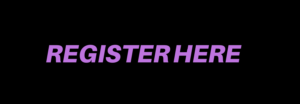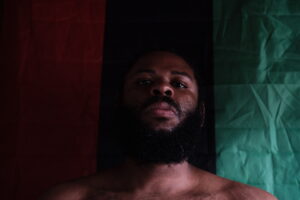‘The Promised Land’ exhibiting artists join SSCAC Exhibitions Manager and Curator Lola Ayisha Ogbara in conversation.
Our current exhibition ‘The Promised Land’, features eleven contemporary photo and image artists working across a diverse range of visual methods, that re-imagine stories of city life and the Great Migration through the decolonization of the lens, Southern rooted influences, movement, family archives and portraiture.
The Great Migration was one of the largest movements of people in United States history. It has transformed cities like Chicago, Detroit, New York and Pittsburgh between 1916 and 1970. Chicago received more than 500,000 Black Southern Americans during this time. To Southern Blacks, Chicago was considered the “Promised Land”. Stories of big city life — jobs with good wages, homes with running water, and basic freedoms denied to Blacks in the South — made the Northern city a prime destination for Blacks coming from below the Mason-Dixon line. As the most documented migration in US history, photographers like Gordon Parks, Florestine Perrault Collins, Moneta Sleet Jr., Roy DeCarava, and Coreen Simpson created imagery that demonstrated Black life in movement. With familial ties to North and South of the Mason-Dixon Line, this stellar group of contemporary artists respond to the many migrations of African Diaspora peoples and the influences of these movements in their work.
This exhibition was organized and curated by SSCAC Exhibitions Manager Lola Ayisha Ogbara, and features the following artists: Lawrence Ageyi, Anwulika Anigbo, Rose Blouin, Billie Carter-Rankin, Jen Everett, Mandela Hudson, Shabez Jamal, Sulyiman Stokes, Darryl DeAngelo Terrell, Loren Toney, and Derrick Woods-Morrow.
Complimentary coffee and cake will be provided during the program.
Learn more about the artists joining us:
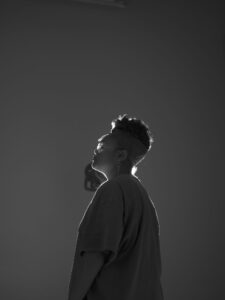
Loren Toney is a published fine art and portrait photographer based in Chicago, Illinois. Finding her artistic footing in authentic emotion her portraiture is used in a wide array of spaces. From live music to behind the scenes photography she’s attuned to capturing the present moment. She was raised in the south suburbs of Chicago and received a BA from Columbia College Chicago as a Cinematography major and Photography minor. Her work focuses on the complexities of interpersonal relationships and identity, particularly the experiences of black men and women. She has been featured in “The Art Of Blackness,” exhibition in 2019 as well as Columbia College’s Library for an installation entitled “The Americans Now”. She was an Artist in Residence for Latitude Chicago in April 2018.
Her clients have included Rolling Stone, New York Times, Pitchfork, Goldenvoice.
https://lorentoney.com/
Sulyiman Stokes is a self-taught interdisciplinary artist from the South Side of Chicago whose sole focus is telling Black folks’ stories. Though music and photography are his primary areas of exploration, he regularly immerses himself in whatever medium is available to him to maximize expression.
Capturing and keeping a record of the ways Black folk struggle toward liberation by way of his work is his contribution to the very same pursuit.
Stokes’s photographs are Black-centric. Through them, he captures the ways in which Black people express their diverse talents and rich culture in everyday life.
Stokes captures the essence of his subjects through the use of soul-stirring and expressive images.
– Dierdre Robinson, South Side Weekly.
https://sulyiman.com/
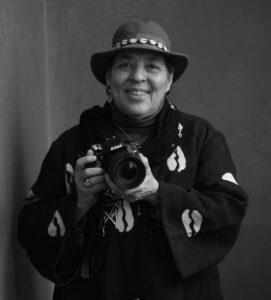
Rose Blouin has created documentary and fine art photography since 1980. Blouin’s work has been exhibited in a number of museums and galleries including Woman Made Gallery, Nicole Gallery, The South Side Community Art Center, Artemesia Gallery, The North Suburban Fine Arts Center, Evanston Arts Center, and the State of Illinois Art Gallery. Her work has received awards in juried exhibitions including Tall Grass Arts “From Earth” exhibition, Black Creativity (Museum of Science and Industry), University of Chicago Logan Center for the Arts “Chicago Jazz: A Photographer’s View,” DuSable Museum Annual Art Fair, and the Milwaukee Inner City Art Fair. Her photographs have been published on the covers of South Side Stories (City Stoop Press), Columbia Poetry Review (Columbia College Chicago), and Killing Memory, Seeking Ancestors by Haki Madhubuti (Lotus Press). Photos of Gwendolyn Brooks are included in Say That the River Turns: The Impact of Gwendolyn Brooks (Third World Press, 1991) and Revise the Psalm: Work Celebrating The Writing Of Gwendolyn Brooks (Curbside Splendor, 2017.)
Blouin has had solo shows at the South Side Community Art Center and at the Ferguson Gallery of Concordia University featuring photographs from South Africa.
Most recently, Blouin mounted a solo exhibition of photographs from Havana at The New Studio in Evanston (2016). She is also a founding member of Sapphire & Crystals, a collective of African-American women artists.
https://roseblouinphotography.com/documentary-portfolio
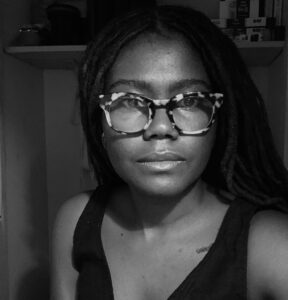
Anwulika Anigbo (b. Nigeria 1987) is a Chicago-based artist tracing the historical and somatic roots of everyday life as it is practiced within blackness through imagery and processes. Her work chronicles and investigates self-determination, presence, knowledge production, and memory. Anigbo uses deep embodiment to make meaning at the intersections of life by rooting her practice in creation as a continuous process of personal and domestic liberation.
Anwulika’s work has been exhibited at The Czong Institute for Contemporary Art (South Korea), Chicago Artist Coalition (Chicago), EXPO Chicago with FOR FREEDOMS (Chicago) and the Chicago Athletic Association (Chicago). She was recently a 2022-23 Fellow with the Economic Security Project, the December 2022 and January 2023 Artist in Residence at Chicago Athletic Association, a 2021-22 Artist in Residence at the Chicago Artist Coalition, and a 2022 3Arts Ignite Fund Awardee. Her work is included in the collection at Ryan Lee Gallery, 21c Museum and private collections. Anwulika is also the founder of The Love Ethic Project which channels creative resources towards the production of a love ethic through direct discourse and action.
At any given moment we stand at the intersection of histories, embodying and accessing more than what we have personally experienced. How far back and forward can individual and collective memory take the process of self-determination. My work uses familiar personal moments and cultural references to access somatic memory and histories of self-determination layered onto our most rudimentary and interior moments. If you know you know, if not discourse is still welcome.
-Anwulika Anigbo
https://anwulikaanigbo.com/

Billie Carter-Rankin (b.1995) is a visual artist from Milwaukee, Wisconsin. She experiments with photography, darkroom processing, and archived images to explore loss within personal and collective memory. Her work primarily focuses on the absence of information, and the potential that is created as a result of that absence.
Carter-Rankin has been featured internationally in exhibitions such as the Setouchi Triennial 2019 in Japan, along with a number of publications such as TIME Magazine, The New York Times, The New Yorker, and Oxford American.She graduated with a MFA in Photography from the School of the Art Institute of Chicago in 2020, and her BA in Media, Journalism, and Film from Howard University in 2018.
https://www.billiecarterrankin.com/
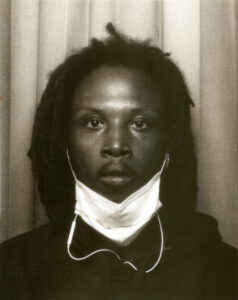
Mandela Hudson is a multidisciplinary artist and designer who lives and works in Chicago, IL. His curiosity and enthusiasm for multiple forms of visual communication assist in the creation of projects in disciplines such as photography, woodworking, filmmaking, and book design. A commitment and the overall aim to build greater bonds and healthier relationships within respective art communities has helped in the growth of his practice.
In 2018, Mandela founded Projection Publishing, a platform that focuses on collaborative contemporary experiences in the visual arts. Projection works to promote and distribute printed matter from an array of creatives working in a multitude of mediums.



